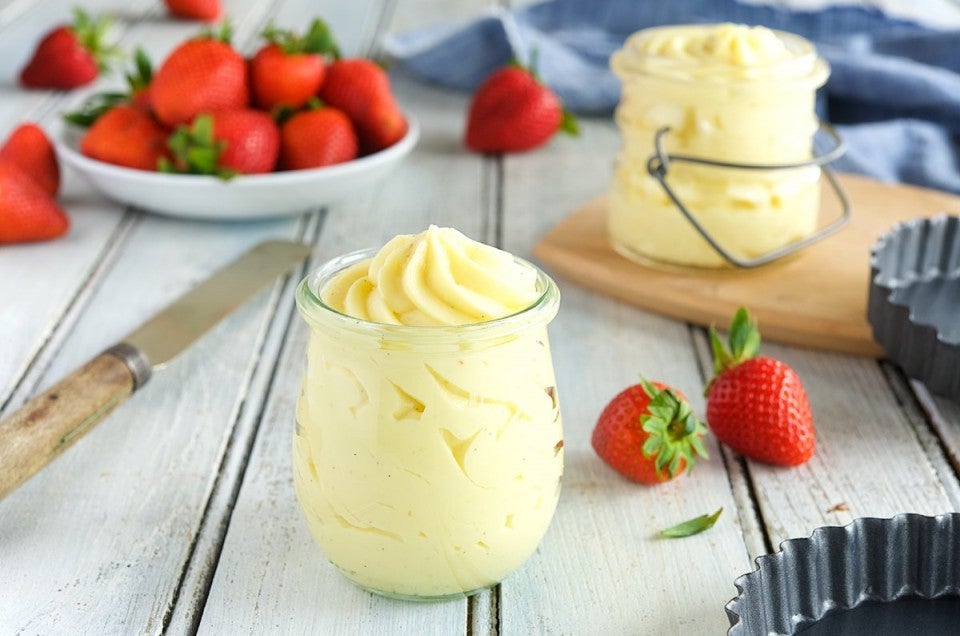


Do you want to make dessert that will separate you from the crowd? Something that will make people go weak at the knees? Something that will make folks say, "You made this from scratch?!" Then you need to learn how to make pastry cream.
Pastry cream, or crème pâtissière, is a rich, velvety filling. It's a staple of classic desserts like cream puffs and chocolate éclairs. It's incredibly versatile and out-of-this-world delicious.
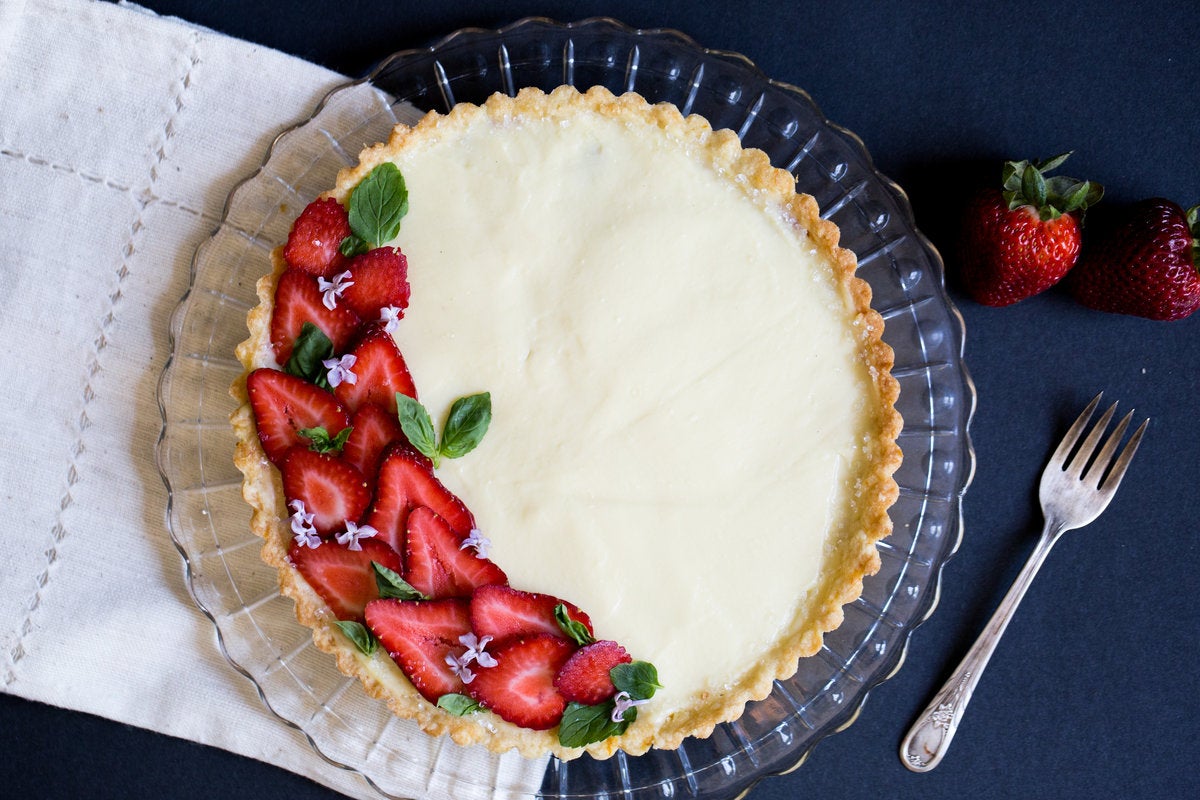
You can use it to fill cakes and tarts, and to top off pastries, pies, and more. With just a few minutes at the stove and a handful of basic ingredients, you can make this most delightful "baker's pudding."
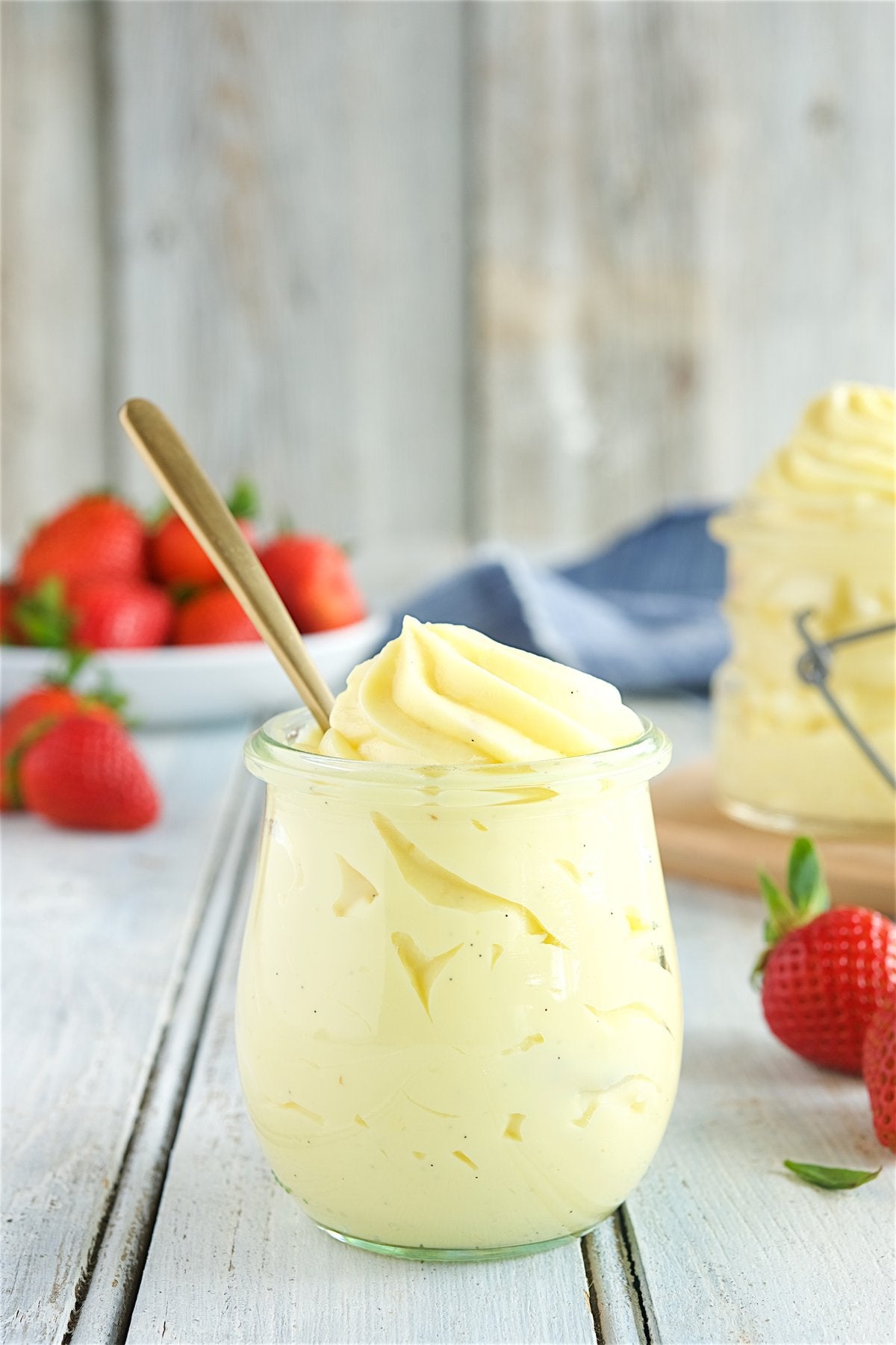
At its heart, pastry cream is a milk-based custard that's thickened with egg yolks and starch. Our pastry cream recipe uses both cornstarch and flour to deliver a luscious, thick texture.
Pastry cream is usually flavored with something tempting too: vanilla is most common, but chocolate, coffee, butterscotch, lemon, lavender, and even basil are all right at home in pastry cream as well. We'll show you how to infuse a world of flavor into your pastry cream so it's perfect for each and every dessert you make.
But first, let's give the timeless vanilla bean version a whirl, shall we?
Start by gathering your ingredients:
3 cups (24 ounces) whole milk*
1/2 cup (3 1/2 ounces) sugar
1/4 teaspoon salt
1/2 vanilla bean, split lengthwise; or 2 teaspoons vanilla extract
1/4 cup (1 ounce) cornstarch
1 tablespoon King Arthur Unbleached All-Purpose Flour
4 large egg yolks
4 tablespoons (2 ounces) butter, plus more for finishing
*You can use 1% or 2% milk if you like, but the pastry cream won't be quite as thick or rich.
Before you begin making the recipe, set up an ice bath: a medium-sized bowl that's resting in another bowl filled with ice water (ice cubes or crushed ice in water). It'll come into play later, and it's especially helpful if it's one of the first times you're making pastry cream. Set this ice bath aside so it's ready at the exact moment you need it.
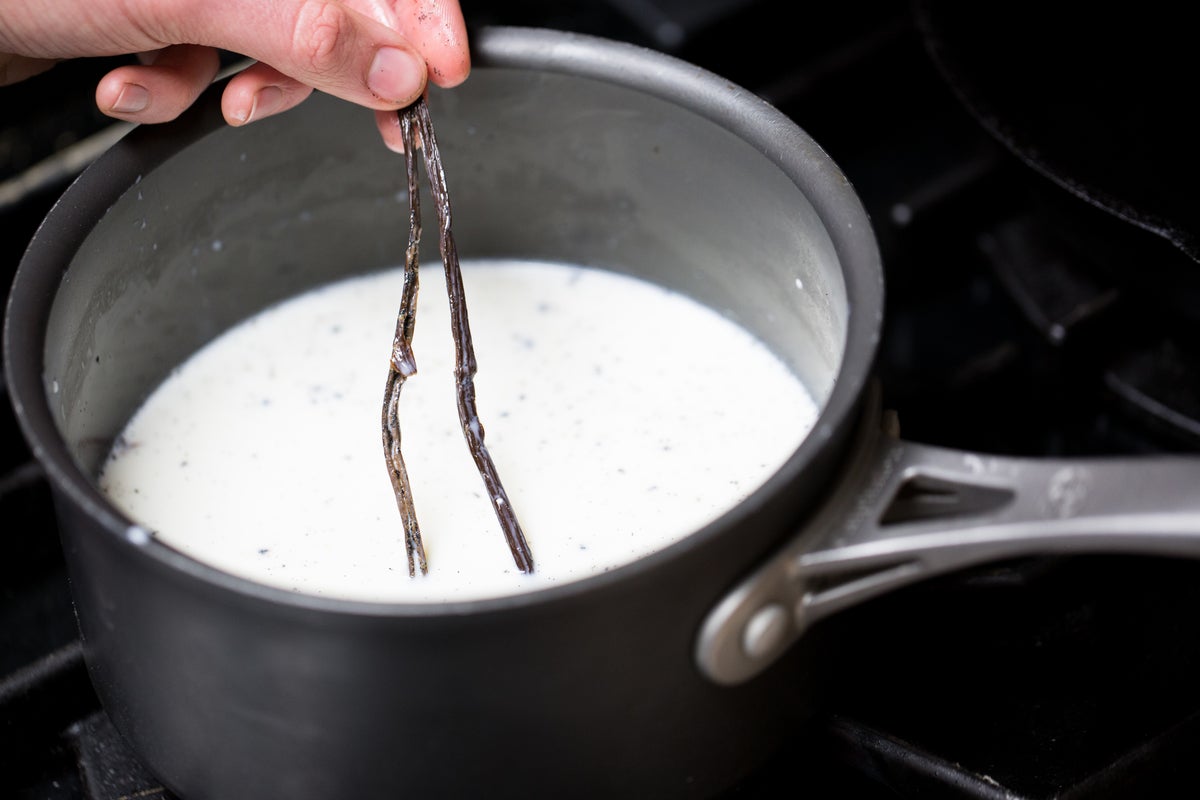
In a medium-sized saucepan, stir together 2 1/2 cups (20 ounces) of the milk, along with the sugar, salt, and the vanilla bean. (If you're using vanilla extract, you'll add it at the end.) Bring this mixture to a simmer over medium heat, stirring to dissolve the sugar.
While the milk and sugar are heating up, whisk the cornstarch, flour, and egg yolks with the remaining 1/2 cup (4 ounces) of milk.
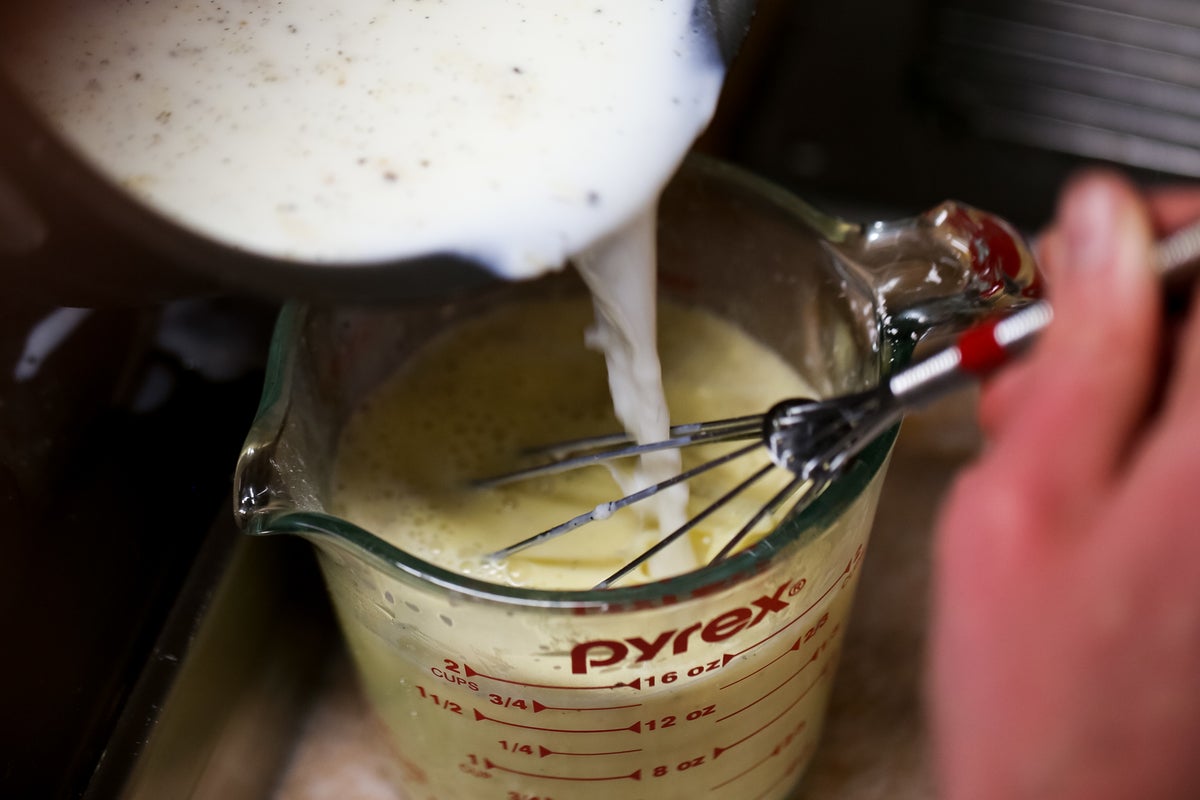
Next, you're going to temper the egg yolks. This means you're going to raise the temperature of the yolks by whisking in some of the hot milk. Warming the eggs up slowly prevents them from scrambling when they're added to the rest of the hot liquid.
Once you've added about 1/2 to 1 cup of hot milk to the egg yolks, pour the mixture through a strainer back into the remaining simmering milk. Then whisk the mixture constantly so it doesn't burn on the bottom. Straining will catch any strands of egg whites or other lumps that you don't want in your pastry cream, as well as the vanilla bean. (Use that vanilla bean to make your own vanilla sugar!)
Bring the whole mixture to a boil, stirring constantly with a whisk until it thickens. It's helpful to also have a spatula nearby so you can scrape the corners of the pot periodically. The pastry cream will become more difficult to stir and start to have the consistency of mayonnaise as it heats up.
Let the pastry cream cook over a boil until your whisk leaves tracks in the cream as you move it through the mixture, about 1 to 2 minutes. Remove the pot from the heat and strain the pastry cream through a fine sieve into the bowl resting in the ice bath.
Straining into a chilled bowl stops the cooking immediately, preventing the pastry cream from curdling or separating. The result is pastry cream with the perfect consistency.

Once you've boiled and strained your pastry cream, it's time to stir in the vanilla extract (if you haven't started with a vanilla bean).
We throw in 4 tablespoons of butter at this point for extra shine and richness. Some bakers may say this isn't traditional, but we say it's delicious! You're welcome to leave it out if you want to bake by the book.
Rub a pat of cold butter over the top of the pastry cream and then cover with a piece of plastic wrap. Make sure it touches the surface of the pastry cream so it doesn't develop a skin.
Now the hard part: Let the pastry cream cool in the refrigerator, about two to three hours at minimum, before using.
Feeling impatient? You can spread your pastry cream in a 9" by 13" pan; the larger amount of surface encourages faster cooling. If you opt for this quick-cooling method, it's especially important that the plastic wrap is touching the entire surface of the pastry cream. You might need to give the pastry cream a quick whisk once it has cooled before using it, but you'll have prepared pastry cream in no time at all!

The most common downfall when learning how to make pastry cream is not cooking the custard for the right amount of time. If the mixture doesn't come to a full boil, the cornstarch won't thicken properly. The result is a thin, soupy pastry cream.
The good news? It still tastes delicious! Consider using your pastry cream in a frozen dessert, or serving it as a rich, creamy sauce poured over cake or ice cream. Just call it crème anglaise, and you'll look like a wizard in the kitchen.
But if you do want to make pastry cream with the traditional consistency, make sure your mixture boils with bubbles forming in the center of the pot as well as the edges.
Don't walk away while you're waiting for the custard to boil — it can quickly go from simmering to a rolling boil in just a few seconds. Avoid cooking your pastry cream for longer than a few minutes while it's at a full boil, as it will become paste-like and too thick. Be ready to remove the pot from the heat and stop the pastry cream right in its silky smooth tracks once it thickens.
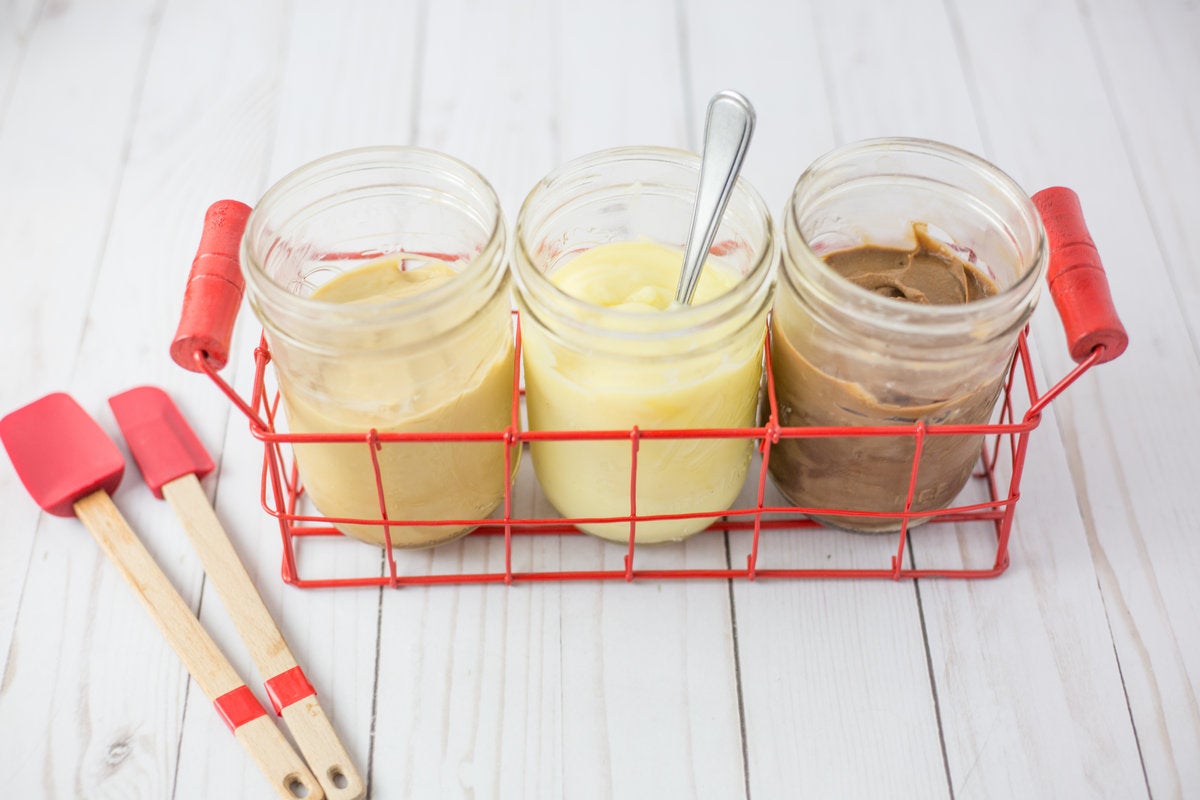
Ready to make things a little more interesting? Time to flavor your pastry cream beyond vanilla! Here are some of our favorite pastry cream variations:
Check out the Baker's Tips portion of our Pastry Cream recipe for more flavor variations like pistachio, hazelnut, and peanut butter.
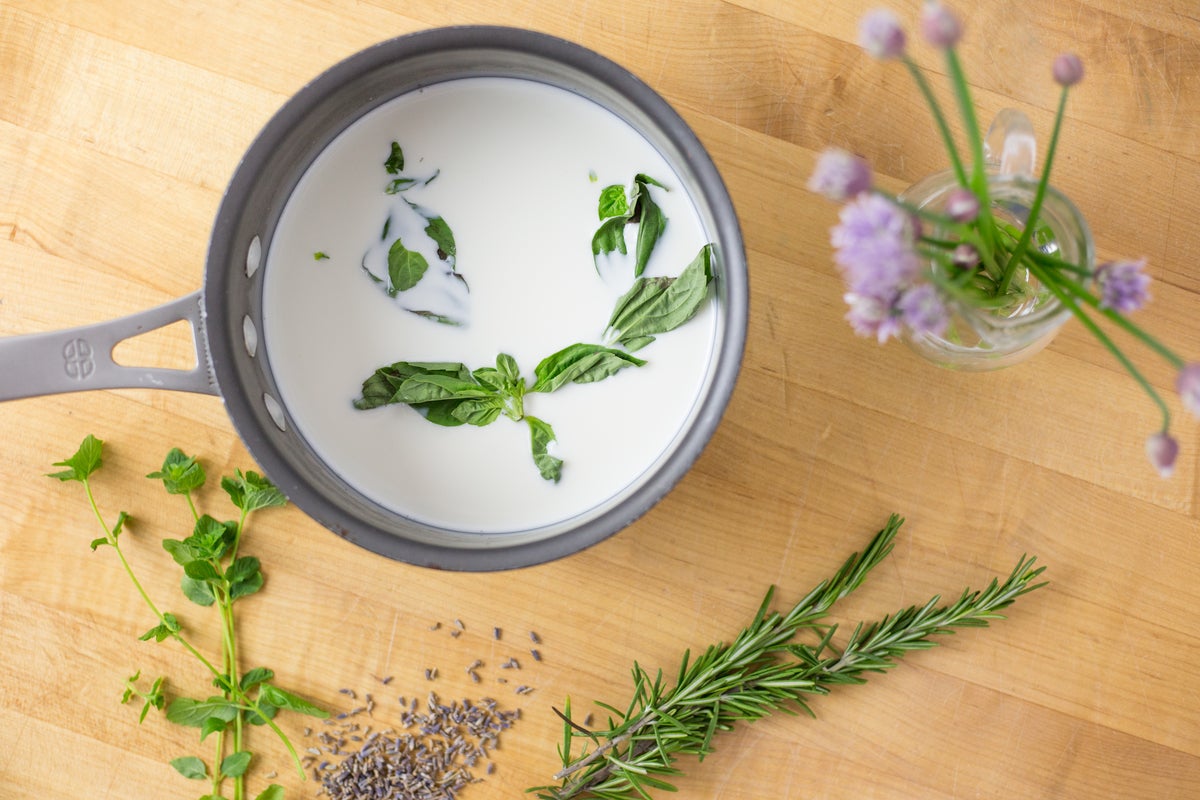
Don't forget that pastry cream uses milk as its base, which means you can infuse practically any fresh herb into the milk to build a flavorful custard. We especially like making lavender, basil, rosemary, or mint infused-pastry cream. (You can also use tea bags! See more tips here: Baking with tea.)
Heat your milk with a few sprigs of your herb of choice, simmering over low heat. Let the milk and herbs steep for as long as you like, from 15 minutes to a full hour based on how strong you'd like the flavors to be.
I like to simmer the milk and herbs for the first 15 minutes, then turn the heat off and leave it to rest for 45 minutes, covered. There's no right or wrong way to do this process — feel free to experiment with how long you heat and steep your milk base until you achieve just the right flavor for your taste buds.
You can also let the flavors infuse by soaking the herbs in milk overnight in the fridge, or up to three days. This is a fantastic option in the summertime when you're looking to minimize time at the stove. No heat required!
Once the milk has the flavor you're looking for (taste it!), strain out the herbs and proceed with the pastry cream recipe using your ultra-flavorful milk. Or if you're making a flavor like mint, you can use an immersion blender to process the herbs and milk together into a beautiful, green-flecked mixture.
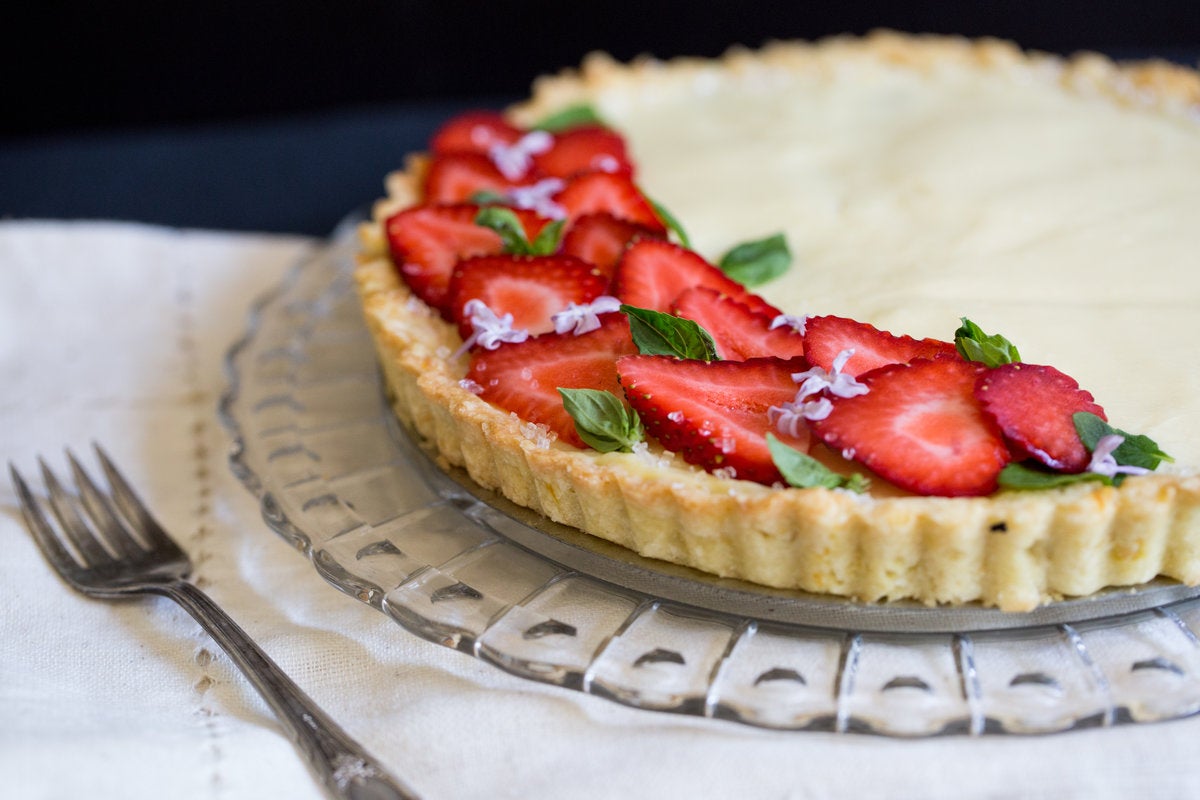
One of my fellow employee-owners, Laurie, used to own her own bakery. She describes how she'd fill tart shells with herb-infused pastry cream and top them off with some fresh fruit of the season. A lemon-thyme pastry cream tart topped with fresh strawberries, anyone?
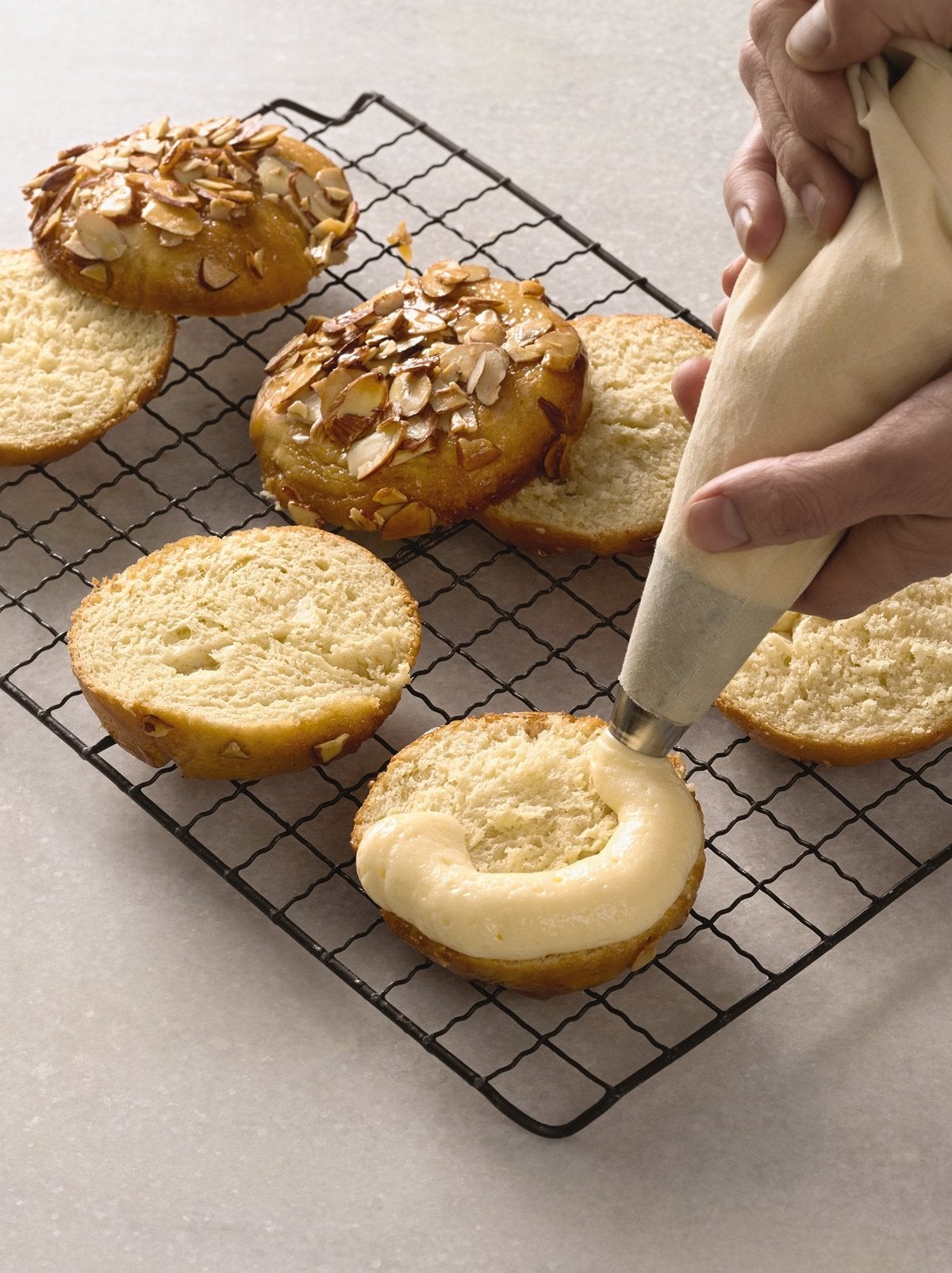
Be whimsical when it comes to enjoying your pastry cream.
If you're looking for a softer filling, say to fill éclairs, you might consider folding in 1 cup of heavy cream that's been whipped to soft peaks into 3 cups of chilled pastry cream. This variation is known as diplomat cream, and it gives pastry cream a light and fluffy lift.
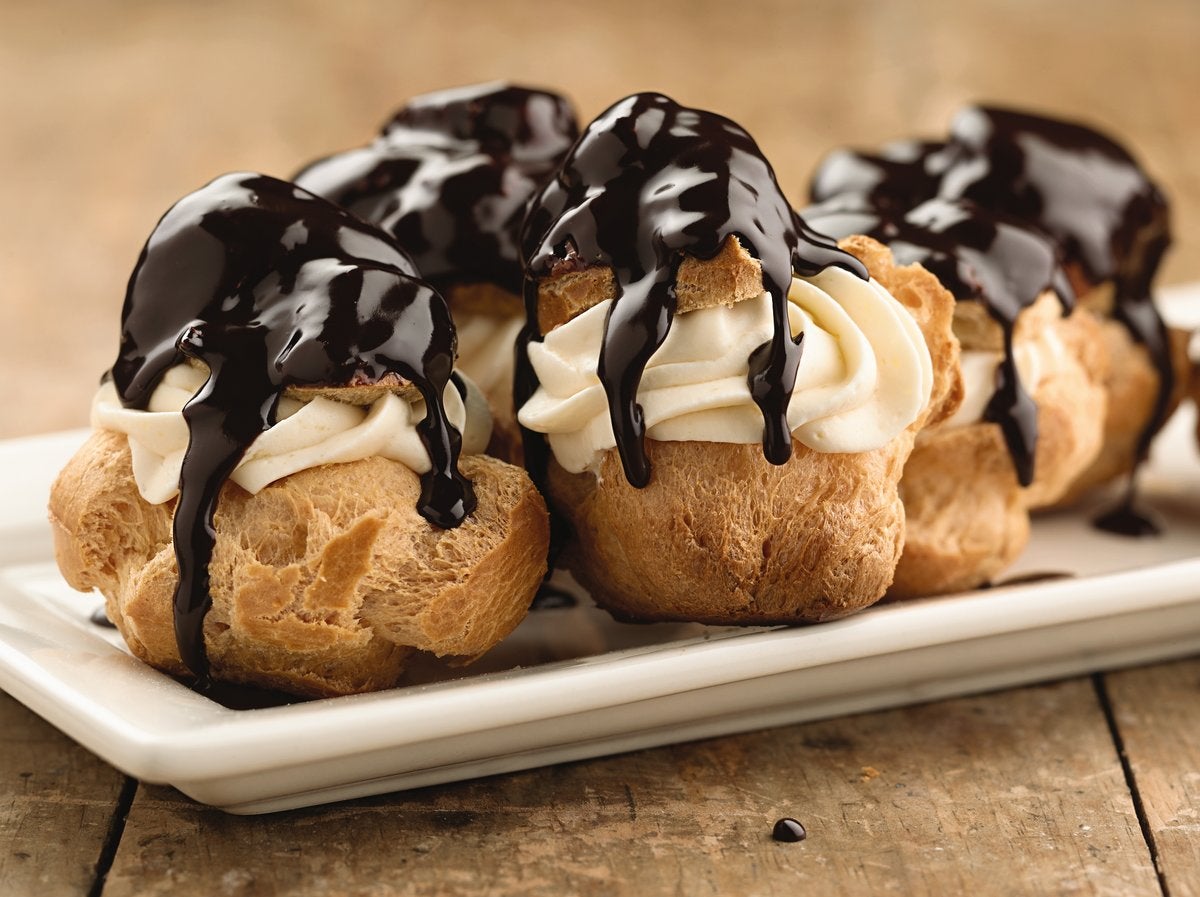
Still looking for ideas? Check out recipes like Easy Mini Puffs, Bienenstich, Berry Blitz Torte, and Vanilla-Cream Filled Brioche. (Remember you can always take a spoon straight to your pastry cream, too!)
I started my career at King Arthur Flour on the Baker's Hotline, so I know there are lots of unanswered questions out there. Here are some of the things I wondered about when learning how to make pastry cream and the answers I've learned along the way:
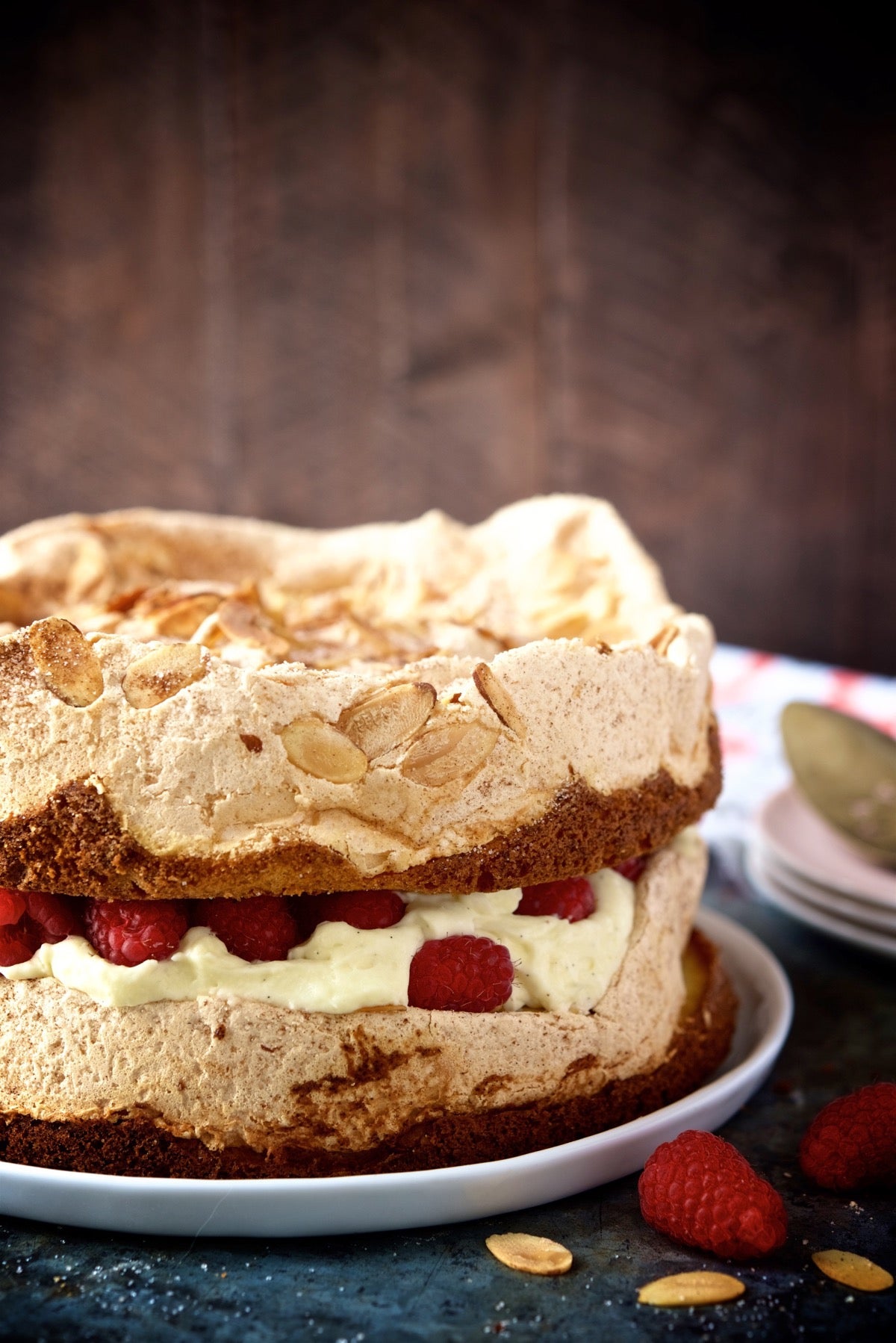
Learning how to make pastry cream will open up a whole world of culinary possibilities. Whether you decide to make a classic vanilla bean version with whole milk or you infuse lavender into a coconut milk base, pastry cream just might become a staple of your baking.
Once you're ready to show off your pastry cream skills, check out our Berry Blitz Torte Bakealong post. This show-stopping dessert is the perfect opportunity to flaunt flawless pastry cream.
Let us know what other pastry cream flavors, infusions, and recipes get you excited to bake; please share in comments, below.
Thanks to Anne Mientka and Liz Neily for taking the photographs for this post.